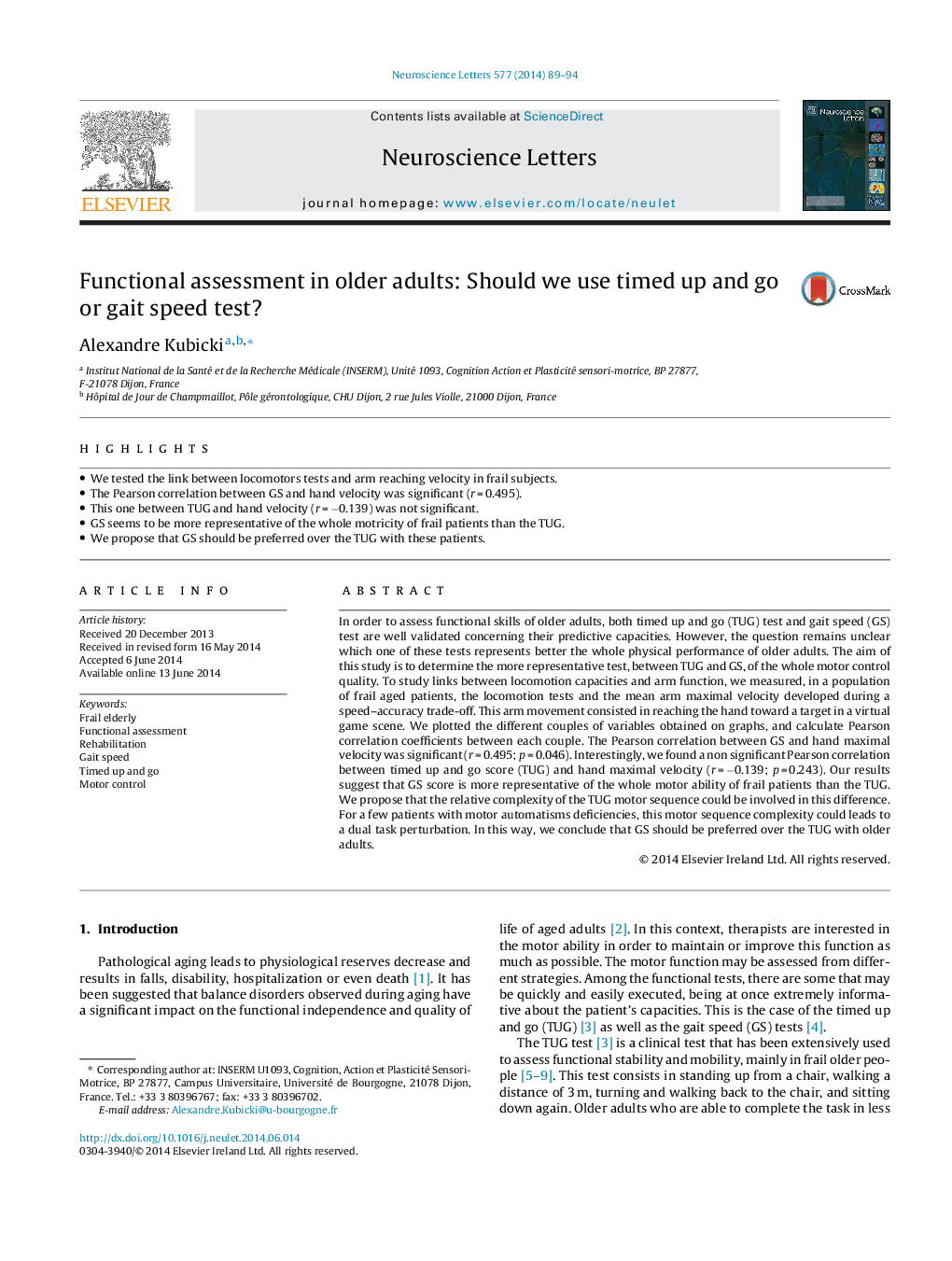| Article ID | Journal | Published Year | Pages | File Type |
|---|---|---|---|---|
| 4343705 | Neuroscience Letters | 2014 | 6 Pages |
•We tested the link between locomotors tests and arm reaching velocity in frail subjects.•The Pearson correlation between GS and hand velocity was significant (r = 0.495).•This one between TUG and hand velocity (r = −0.139) was not significant.•GS seems to be more representative of the whole motricity of frail patients than the TUG.•We propose that GS should be preferred over the TUG with these patients.
In order to assess functional skills of older adults, both timed up and go (TUG) test and gait speed (GS) test are well validated concerning their predictive capacities. However, the question remains unclear which one of these tests represents better the whole physical performance of older adults. The aim of this study is to determine the more representative test, between TUG and GS, of the whole motor control quality. To study links between locomotion capacities and arm function, we measured, in a population of frail aged patients, the locomotion tests and the mean arm maximal velocity developed during a speed–accuracy trade-off. This arm movement consisted in reaching the hand toward a target in a virtual game scene. We plotted the different couples of variables obtained on graphs, and calculate Pearson correlation coefficients between each couple. The Pearson correlation between GS and hand maximal velocity was significant (r = 0.495; p = 0.046). Interestingly, we found a non significant Pearson correlation between timed up and go score (TUG) and hand maximal velocity (r = −0.139; p = 0.243). Our results suggest that GS score is more representative of the whole motor ability of frail patients than the TUG. We propose that the relative complexity of the TUG motor sequence could be involved in this difference. For a few patients with motor automatisms deficiencies, this motor sequence complexity could leads to a dual task perturbation. In this way, we conclude that GS should be preferred over the TUG with older adults.
